Calgary II: The Ugly City 1964
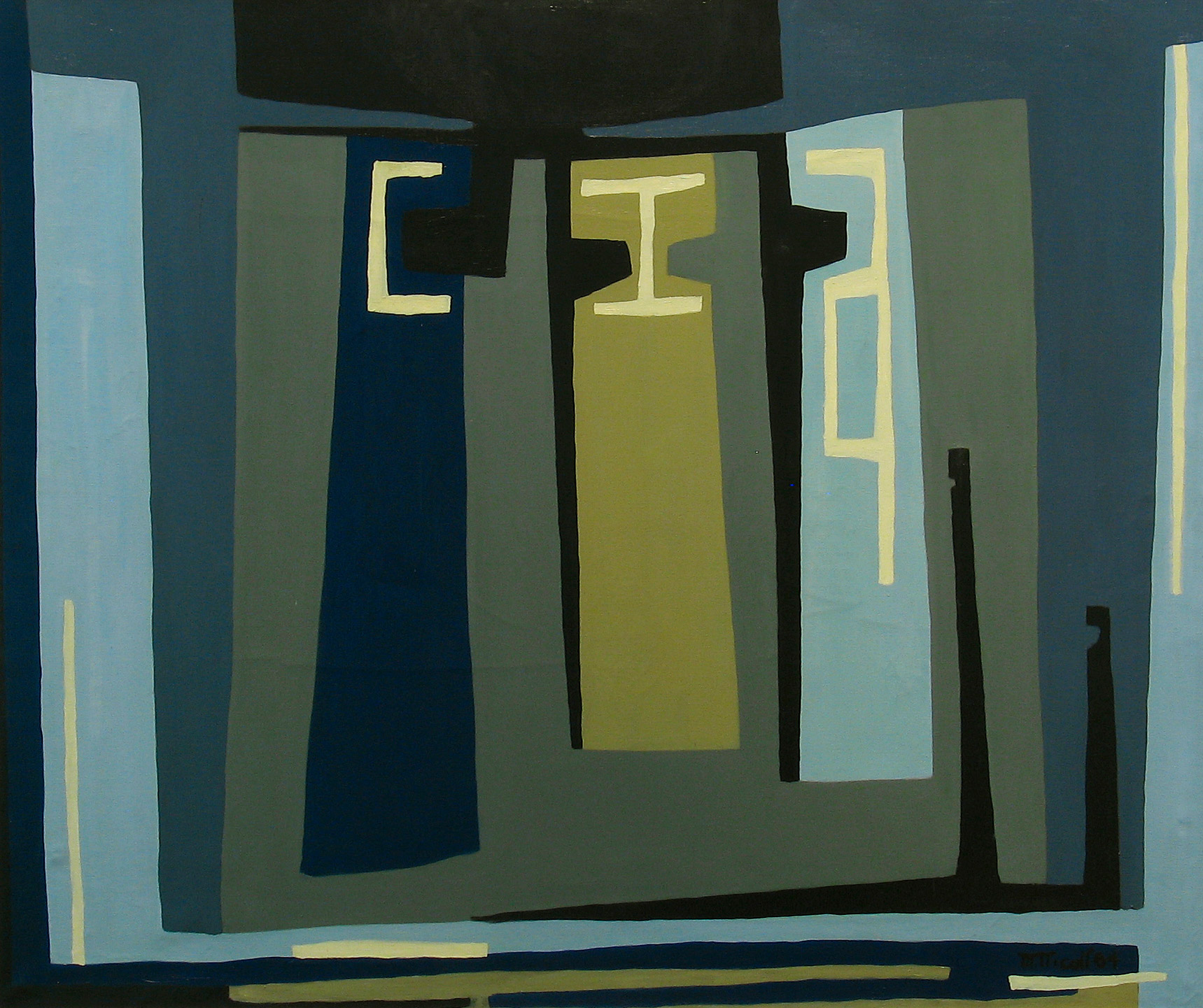
Marion Nicoll, Calgary II: The Ugly City, 1964
Oil and Lucite on canvas, 116.8 x 139.7 cm
Private Collection
In 1964, Marion Nicoll began a new project inspired by her city of birth—the Calgary Series (I–III), 1964–66. Calgary II: The Ugly City layers blues and greens in block-like shapes and includes the letters “CIA” in yellow bands in the centre of the composition. Of the three paintings in the Calgary Series, this one best reflects the internal conflict Nicoll experienced about her homecoming, emotions that had been brewing since 1959.
When she returned to Alberta after a year in New York and Europe, her teaching position in design and crafts at Calgary’s Provincial Institute of Technology and Art (PITA) remained unchanged at a school still run by men who excluded her from giving classes in painting. This reality continued until her retirement in 1966, despite her many successes in Western Canada and showing in the National Gallery of Canada’s 5th Biennial Exhibition of Canadian Painting 1963. The experience must have felt like a bitter pill after having turned down teaching opportunities in New York because of her husband’s disdain for the city and desire to return to family roots.
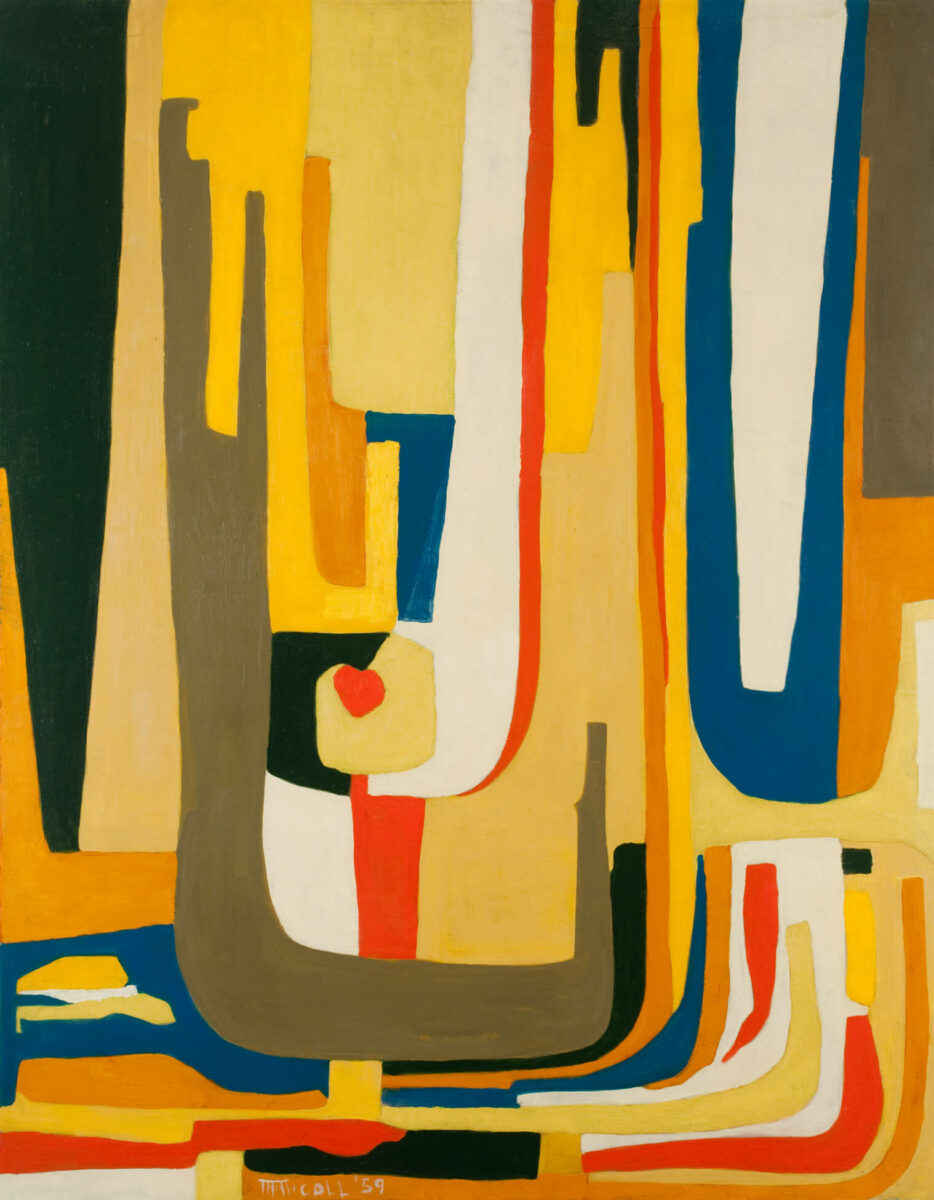
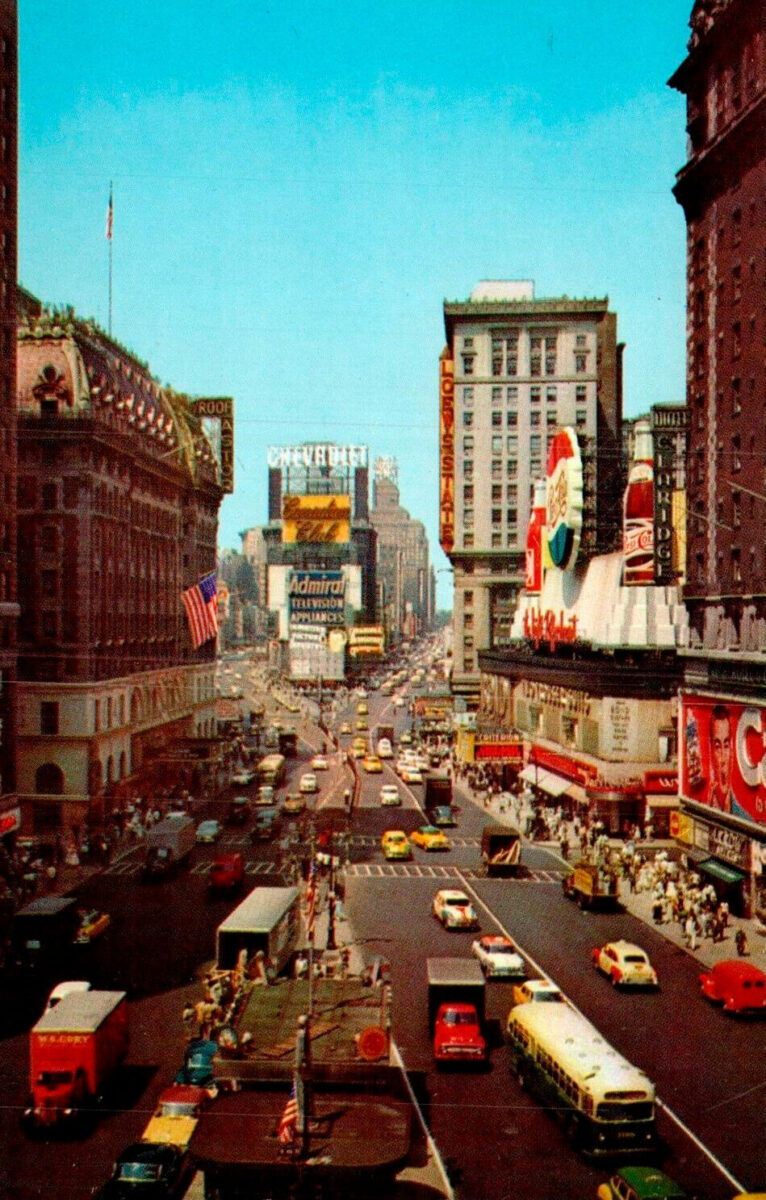
Just before painting this work, Nicoll stated that she yearned to live in New York, “where I’m twice as alive. New York is a friendlier place than Calgary…to me it’s the most beautiful city in the world.” The warm red-yellow palette she used in The Beautiful City, created in Manhattan in 1959, met its opposite in Calgary II: The Ugly City, with its cool blue-green palette, the other side of the primary colour spectrum. Usually, Nicoll found impetus in a single location or experience to develop her abstractions but Calgary II: The Ugly City was possible because of its precedent, The Beautiful City.
Nicoll was reticent to offer much by way of spoken words about the meaning of her paintings, noting that, “If my work doesn’t make its own statement, then nothing I can say would make any difference. If it does make its own statement, a written explanation is superfluous.” Just the same, the integration of the highly charged letters “CIA” is an uncanny connection to the acronym for the Central Intelligence Agency. This American institution was created in 1947 to address foreign intelligence matters and mounting tensions between the United States and the Union of Soviet Socialist Republics. P.W. Martin’s writing on the Cold War, advocating for faith and peace in a troubled nuclear age, had entered Nicoll’s library by 1959. She had read Martin’s call to personal action: “At a time when it seemed as if the individual citizen were becoming little more than a statistical unit in the modern mass state, it is upon the individual citizen that everything now depends.”
At the very least, Calgary II: The Ugly City marked an important realization that Nicoll could achieve more in her abstractions than her previous paintings, which froze in time only one place. Through careful titling and use of symbol, autobiography, and contrast, her abstractions were becoming more layered and multi-locational. The oppositions of beauty and ugliness are contrasted in the two paintings, but Calgary II may also signal Nicoll’s intention to establish a comparison of nations. Alongside the Alberta Series, 1960–62, the Calgary Series was among Nicoll’s major bodies of work to respond to her home. In those groupings, Calgary II has held a critically significant place since the 1970s, having been included in her 1975 retrospective exhibition and serving as frontispiece for the first monograph on her life and art in 1978.

 About the Author
About the Author
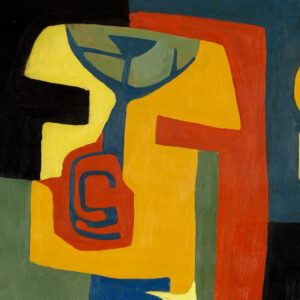 More Online Art Books
More Online Art Books
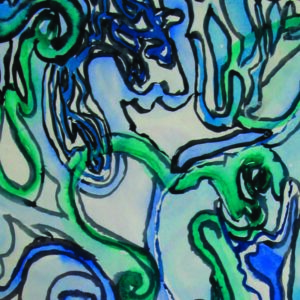 Acknowledgements
Acknowledgements